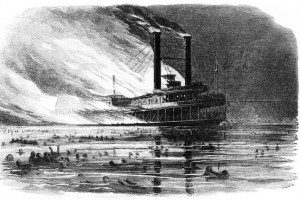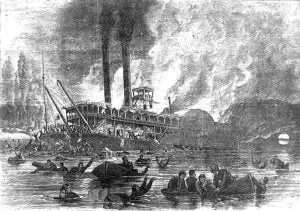 My recent post about Mark Twain’s precognitive dream of his brother Henry’s tragic death has triggered a stream of questions, including this one:
My recent post about Mark Twain’s precognitive dream of his brother Henry’s tragic death has triggered a stream of questions, including this one:
“What’s the use of dreaming the future if you can’t do anything about it?”
My response: any future we can foresee, whether in dreams or though intuition or careful analysis, is a possible future. We may be able to change the odds on the manifestation of a future event, reducing the likelihood that something unwanted will happen, or improving our chances of securing a happy outcome.
Our ability to dream the future is part of our basic survival kit, part of what kept us alive when we were little more than naked apes without good weapons, trying to fend off leathery raptors or saber-toothed tigers.
In our Active Dreaming approach, we use these key methods to work with dreams of the future in order to make better choices and shape the future for the better:
1. Run a reality check on all dream material
Ask, of any and all dream material: Is it remotely possible that something going on in this dream could manifest in the future, literally or symbolically (or both)?
2. Practice dream reentry to clarify and expand the available information
If you can get your head back inside the dream, you may be able to get clarity on the when, where, how and who of a possible future event. If you think of a dream as a place you have been, it’s not too hard to understand that because you have been to that place, you might be able to go there again. When you succeed in reentering a dream space, you are not confined to your first memories of the dream on waking, which may have been muddled and fragmentary. You can enter other, related scenes and bring back much more data.
3. Make a practical action plan to use your dream guidance
If you now feel sure that your dream revealed a possible future, you want to to take definite and appropriate action to head off an undesirable future event, or to bring through possible good fortune. The action plan may range from getting a health checkup to being extra cautious at a certain road intersection, to checking up on your financial planner, to sharing drema information with another person to whom it may relate.
Some cultures teach rituals for containing or taming an unwanted future. I am intrigued by an apotropaic ritual in traditional Iroquoian society, which consisted of play-acting parts of an evil future, foreseen in a dream, in the hope that the partial fulfillment of the dream in the performance would satisfy whatever was at work in the secret order of events, so that the full evil portended by the dream would no longer have to be play out. I have written about this in Dreamways of the Iroquois. Bizarre though it may sound, I have seen this method work.
Back to Mark Twain, and his terrible dream of Henry laid out in a casket, with the bouquet of roses on his chest. Could the methods described above have enabled Sam Clemens to help his brother to escape the “dead room” in Memphis? Of course, we cannot know. But I feel quite certain that Mark Twain would have been willing to give the Active Dreaming methods summarized above a better-than-college try, had he known about them. Had he not allowed his family to talk him into dismissing his dream as “only a dream”, careful analysis might have drawn him to think about possible scenarios for death along the river, of which the most likely for someone working on a riverboat, in those days, was a boiler explosion of the kind that caused Henry’s death.
Through dream reentry, Mark Twain might have been able to establish how the death scene came about, and might then have been able to take action by counseling his brother not to travel, separated from him, on the return voyage upriver with the rage-filled pilot.
We know that Mark Twain – who paid closed attention to dreams and coincidence throughout his life – was eager to expand his understanding of dreamwork and active imagination. In my Secret History of Dreaming, I describe how he returned, in his later fiction, to his regrets that he had not gone a head and staged a kind of dream theater at home to help his beloved daughter Suzy lift the oppression of dreams in which she was being pursued and eaten by bears, dreams that may have portended her tragic death from illness but could also have been the key to healing had they been fully heard and acted upon.

